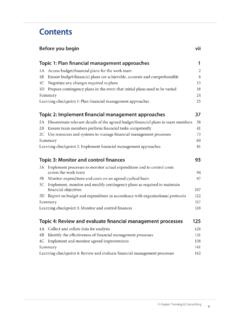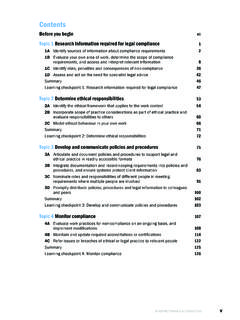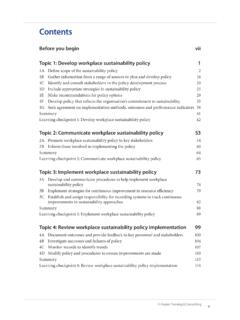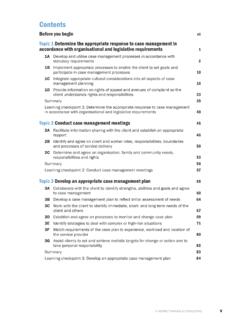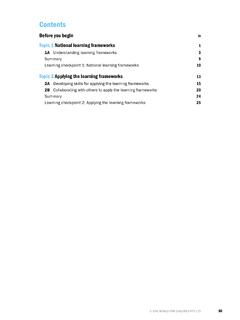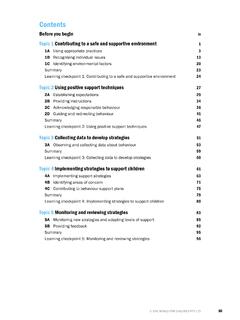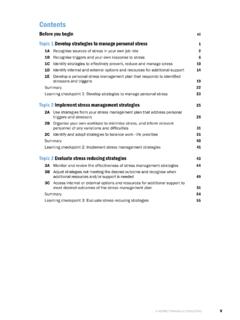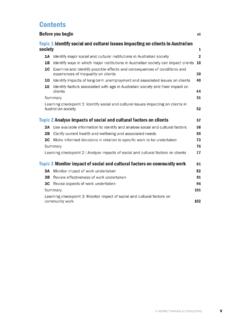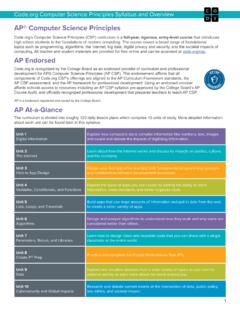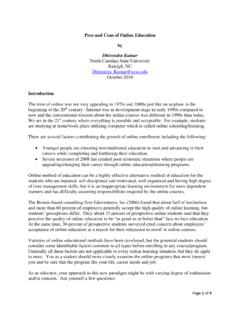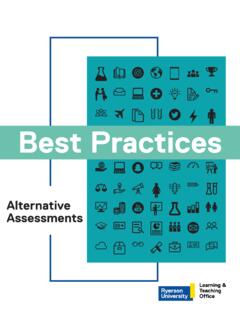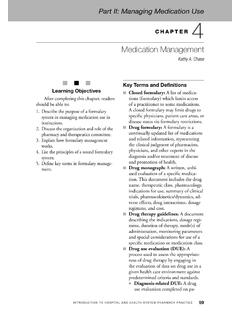Transcription of BSBMGT516 Facilitate continuous improvement
1 Aspire Training & ConsultingvContentsBefore you begin viiTopic 1: Lead continuous improvement systems and processes 11A Encourage and support team members to participate in decision-making processes 21B Ensure continuous improvement processes are communicated to stakeholders 111C Meet sustainability requirements 261D Develop effective mentoring and coaching processes 341E Ensure knowledge management systems address insights and experiences from business activities 38 Summary45 Learning checkpoint 1: Lead continuous improvement systems and processes 46 Topic 2: Monitor and adjust performance strategies 512A Develop strategies to monitor progress and identify improvements 522B Adjust and communicate strategies to all stakeholders 59 Summary64 Learning checkpoint 2: Monitor and adjust performance strategies 65 Topic 3: Manage opportunities for further improvement 693A Inform the team of the outcomes of continuous improvement efforts 703B Record work team performance to identify improvement opportunities 773C Incorporate areas for improvement in future planning 84 Summary88 Learning checkpoint 3.
2 Manage opportunities for further improvement 896 Aspire Training & ConsultingBSBMGT516 Facilitate continuous improvementApply communication devices and processesMake it easy for staff to contribute, offer suggestions and display their innovative ideas. Think laterally. You might encourage them to email ideas they have which you can then collate and present at a team meeting. Articles on innovation might be published on the organisation s intranet. The intranet is also a good medium in which to present articles about innovation or feature a staff member who contributed a suggestion that helped the organisation make a decision. Suggestion boxes have a varied success rate but may be worth a try. There is a range of well-proven techniques you can use to encourage team members to participate in the continuous improvement process.
3 Here are examples of five commonly used useful technique encourages the generation of ideas amongst team members, allows each participant to state their opinions in a non-threatening environment. Managers can use brainstorming to unite a group with diverse ideas and needs and identify systems and processes that would support continuous improvement . The process is as follows: Define and agree on the objective. Brainstorm ideas and suggestions having agreed a time limit. Categorise, condense and refine ideas. Assess and analyse the pros and cons of each idea. Prioritise options and rank list as appropriate. Agree on action and timescale for implementation. Control and monitor mappingMind maps are a useful tool for documenting a team s approach to a problem or process.
4 A key word, idea or specific problem is placed in the centre. Three or four key ideas (written in different colours to help you categorise the ideas) are then written to radiate outwards from the key word. Ideas are built up by writing brief words or notes that spread out from these words like the branches of a tree. A manager can use a mind map to show the structure of the problem and to identify linkages between points. It is important to create mind maps in a format that makes it easy to remember and recall Aspire Training & ConsultingBSBMGT516 Facilitate continuous improvementFacilitate training and development When an organisation is committed to continuous improvement , it must ensure that employees understand their role in the process and how they can contribute.
5 Training and development is two-fold. It is essential that you are able to give staff the skills in teamwork, decision-making and assertiveness so they can fully participate in the continuous improvement cycle. Here are some further considerations about facilitating training and training To give staff skills in decision making you can: provide training in being assertive so team members have the abilityto speak at meetings, make suggestions and discuss issues, and are confident to assume responsibility for activities practise decision-making techniques provide information about innovation and the use of creativity toeffect improvement provide training in communication skills so people are confident whenspeaking provide training in public speaking so people are comfortablespeaking in a and buddy systems Mentoring and buddy systems are two strategies that an organisationcan employ to support team members to participate in decision-making.
6 A manager may appoint an experienced colleague to provide encouragement and support for a new team member. This mentoring relationship is an informal arrangement and one in which the mentor does not tell the team member what to do but rather offers advice and suggestions based on their experience and particular expertise. An even less formal arrangement is the buddy system in which themanager may select a colleague to be available if the team member needs help or has difficulty understanding something. Both strategies work well if people have trust and confidence in oneanother and want to learn, are willing to ask questions and have the initiative to clarify anything they don t skills to implement an improvement Provide the skills and knowledge needed for staff to take on theimprovement; for example using a new software program; operating a new piece of machinery.
7 It might involve training in change management so the change to the new system or procedure is problem-free and carried out efficiently. Training might be conducted in-house, off-the-job; you might use colleagues with expertise or external consultants. In-house coaching is a costeffective way to improve skills. Aspire Training & Consulting11To p i c 1 Lead continuous improvement systems and processesIt is crucial that the processes an organisation uses to identify the need for improvements are communicated clearly to staff and other stakeholders, so everyone knows what they are doing and what is expected of them. continuous improvement practices vary among organisations depending on the goals and culture of the business.
8 continuous improvement can be applied to any activity and should follow the following four 1 Encourage the team to consider ways to improve Questions to ask: Is there a better way this activity could be done? How can we do it more efficiently? Are there any wasteful or redundant elements to this activity? Is the activity achieving what we want it to? What would we have to do to improve the process? How can we ensure the change will be successful and improveperformance?Step 2 Plan to implement the change Questions to ask: What do we need to do to introduce the change? What resources do we need? How can we ensure everyone views the change positively? How will we measure the effect of the change?Step 3 Review and monitor changes Question to ask: Is the change improving performance?
9 Step 4 Implement changes to improve performance Question to ask: How can we support the team when introducing change?1B Ensure continuous improvement processes are communicated to stakeholders Aspire Training & Consulting17To p i c 1 Lead continuous improvement systems and processesStagesObjectivesTools and techniquesKey outputsControl process Understand theimportance ofplanning andexecuting against theplan Determine thestrategy to ensureachievement of thetargeted results Understand how todisseminate lessonslearnt Identify opportunitiesfor standardisation Project planning Plan-Do-Check-Actcycle Process controlsystems Standards andprocedures Training Team evaluation Change executionplans Potential problemanalysis Success storiesModifications and improvementsImprovements may range from small changes.
10 Such as requiring staff to sign in when they arrive at work, to large-scale improvements, such as an organisational restructure to improve production and reduce costs. When an improvement has been identified, whether it is to systems and processes, products or services, it must be clearly defined and articulated to all stakeholders regardless of the size of the improvement . For example, a simple change of moving a photocopier to improve the health and safety of operators can be discussed at a staff meeting and followed up with an email and a notice on an information board. A more substantial improvement such as the introduction of a new customer management software program will require discussions, opportunities for staff to ask questions and training prior to its implementation.
